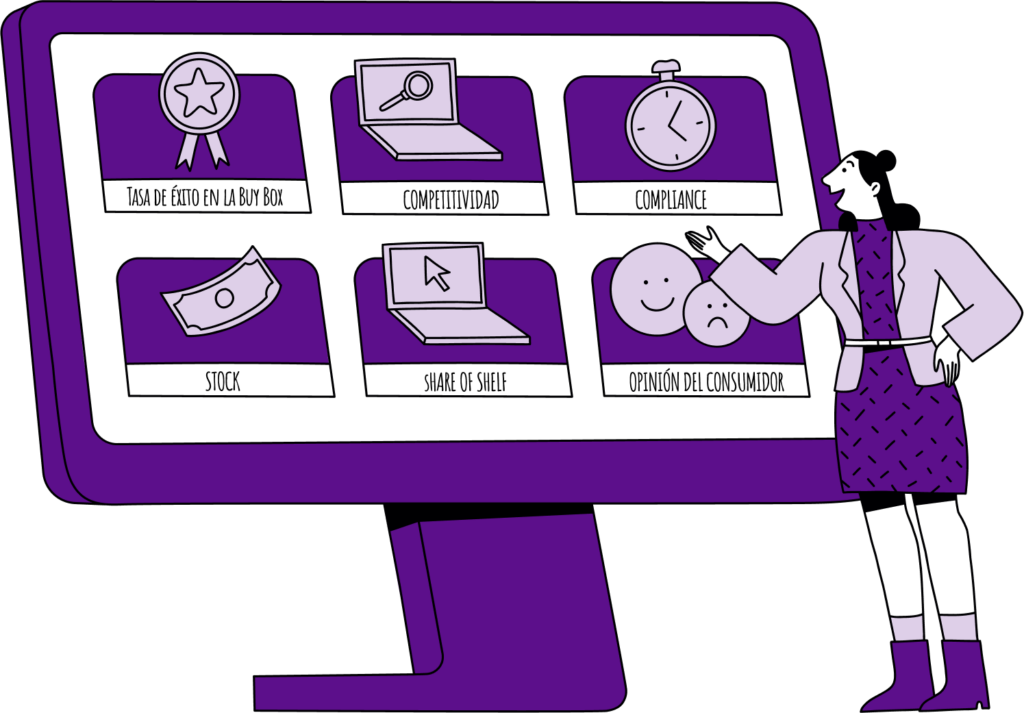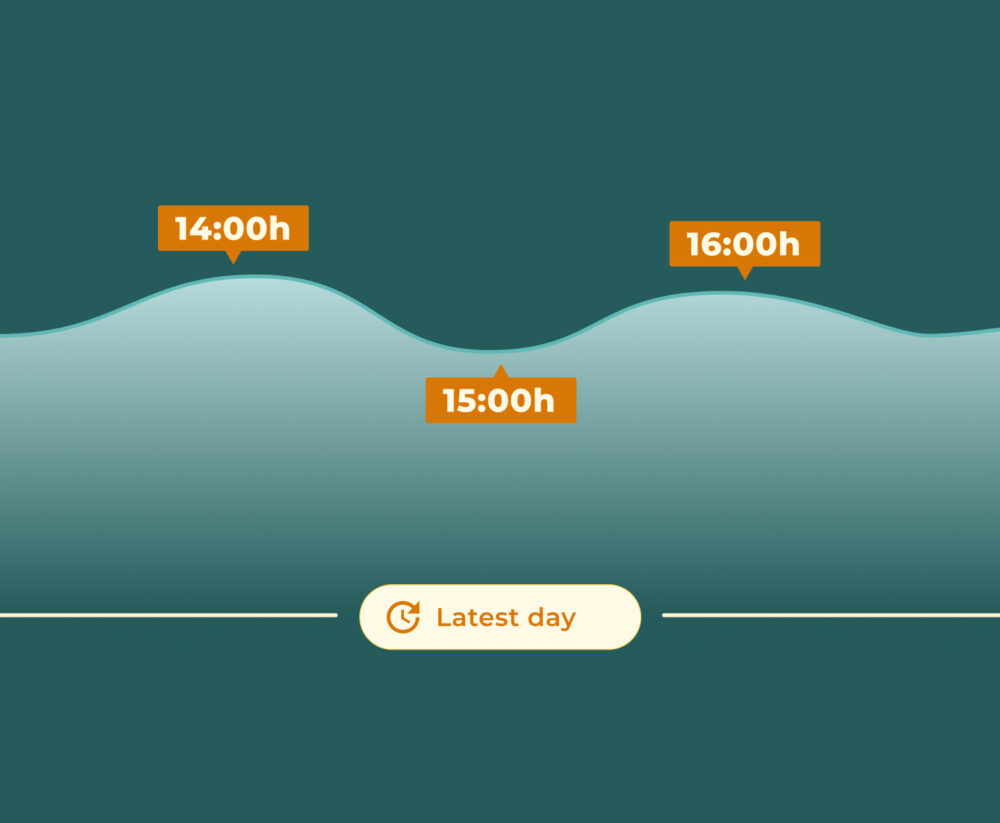Demystifying the concept of Digital Shelf Analytics: Basic considerations and metrics to follow
Currently, every minute of every day there are 6 million people shopping online. Every minute of the day, customers spend 443k on Amazon (this figure accounted for a 57% increase between 2021 and 2022) and they perform 5.9 million searches on Google.
The customer lives online, all the time. He works, shops, socializes and even spends his leisure time online. E-commerce is no longer new, it is the present. And our purchases are more influenced by the digital world than ever before.
However, while our consumer habits have changed, one thing has not: consumer expectations. Customers are still looking for personalized experiences, albeit from the comfort of their own home. And in order for the customer to get this experience, how can brands and retailers manage to respond to this need and build a digital shelf that converts and generates profitability?
The answer is simple: “Digital Shelf Analytics,” or what amounts to the same thing, using digital shelf analytics.

What is Digital Shelf Analytics?
It is the constant process of thoroughly reviewing and monitoring your products on the Digital Shelf for actionable data, using intelligent automations that allow you to find opportunities for improvement. This data can usually be found in a platform provided by a data analytics provider.
The Digital Shelf Analytics information will allow you to resolve any issues with your listed products, such as incorrect copy or adding a better quality image. This will ensure that your product pages are always optimized and updated in detail, so that your customers can find all the information they need.
In addition, it can also help you to create a strategy in relation to your products, with respect to pricing and content. This way you can create an online value proposition. This ongoing process of analyzing data from your online presence helps multiple people within an organization – including category managers, account managers or brand managers – and ultimately provides actionable insights, with which to win on the Digital Shelf.
The 4 key factors in the Digital Shelf
As we explained in the article on Digital Shelf, this is a concept that goes beyond simply displaying products on a website; it encompasses a series of strategies and practices designed to optimize the visibility and performance of products in digital environments.
These are the 4 key factors that we will have to take into account to design our Digital Shelf strategy:
Availability
The availability and distribution of a product are essential. Without this, a product will not have a presence on the digital shelf, and therefore, the possibility of a conversion will be lost. The investment in marketing campaigns will have been useless if the product is out of stock. Stock-outs produce a negative consumer experience, frustrate their purchasing aspirations and damage your brand image. If at that point, a competitor comes in and offers you a similar product, you may very well lose a customer.
Price
The shopper we were talking about at the beginning of this article, who lives online, compares prices before making a purchase. And makes decisions based on these prices. Having visibility on your prices in different marketplaces, and on competitors’ prices and promotions, will allow you to improve your position and agreements with each seller, as well as to achieve brand consistency.
Content
On the Digital Shelf, optimizing your content is another essential requirement to be chosen by buyers. Your product pages should have the most detailed information possible, a description that helps to understand the benefits of your product and answer questions, several high-resolution images, and a relevant title.
Positioning
One of the key points we stated in the article on Digital Shelf is that consumers will not buy what they can’t find. The positioning of your product in the search results pages is key to reach more buyers. Being among the first positions on the first page will help you to improve sales, your brand visibility and your online reputation.
Through a Digital Shelf Analytics tool, you will be able to exhaustively control these 4 key factors. You’ll avoid losses (both of customers and sales) caused by out-of-stocks. Control your prices and those of your competitors. You will ensure that your content meets all the requirements. And you will be able to optimize the position of your product to appear among the first search results.
Below we explain which metrics you will need to measure to achieve this control.
8 key metrics to monitor with your Digital Shelf Analytics tool to control your brand and its positioning
Share of shelf
Your brand’s share of shelf measures the visibility of a product in organic search results for keywords, and compares it to your competition. A high share of shelf would indicate that a large number of consumers are searching for your brand, and might be inclined to make a purchase. If you want to win on the Digital Shelf and get a bigger slice of the pie than your competitors you need to actively monitor how much of a retailer’s search traffic is directed towards your products.
This task cannot be done manually, as it would involve a huge amount of work on the part of the technical team. Only a Digital Shelf Analytics tool such as flipflow can provide you with this complete information, automatically and in real time.
Share of ads
The share of ads gives you the visibility and position of any type of ad (banner, sponsored product…), both yours and your competitors’. This metric measures where you appear, or your competitors appear, and with which ads. It is always related to a specific period of time.
Number of distributors
It would be logical to think that the more distribution of our product,the more sales, but often one thing does not translate into the other. And here we have to differentiate between two aspects:
- Retailers: When a retailer sells your product, it could happen that he does not respect the sales prices or your brand image, and this could generate confusion in the buyer or a drop in your sales, if he sells well below the established minimum price.
- Marketplaces / Sellers: When a marketplace like Amazon or Mercado Libre is full of multiple sellers selling your products, it can even hurt your sales. For example, with many sellers it can happen that those buyers who want your products do not know how to distinguish between legitimate sellers and those who are not.
All this uncertainty, confusion and price changes will always affect the final purchase decision.
The larger your catalog and the more you distribute your products through many different channels,the more difficult it is to monitor the entire distribution chain. That’s why platforms like flipflow can help you control it, consolidating all the information of each product and all its distributors (whether retailers or marketplaces) in one place so you can take the appropriate actions.
Content quality and compliance
As your product catalog grows and your brand evolves, product pages will inevitably change. If you don’t actively monitor them to ensure they all remain the same and of the same rigorous quality, you will find that consumers perceive your brand differently depending on which page they are visiting. You may also find that they don’t perform as well as they should. To prevent this, you need a unique version of each product page, including title, description, images and other content.
Once you have this version created, you can evaluate the quality and content compliance of any of the product pages at the retailers where you sell your product. Our tool will automatically review all your product pages and give each of them a “metascore” based on content compliance, how they align with your content guidelines It will also help you control the quality of this content, so you don’t miss any details.
All this will allow you to quickly identify pages that need an update or a change. You will also be able to compare your product pages with those of your competitors, so you can discover possibilities that you are missing.
Stock
Your inventory plays a critical role on the Digital Shelf. It doesn’t matter how good your brand is or how innovative your product is. If you run out of stock, your market position will fall and another company will step in. Therefore, it becomes more than necessary to control your stock. In addition, you also need to monitor your competitor’s stock. If they run out of stock, you will have a golden opportunity for your brand and you must know how to take advantage of it. To do so, you can spend more money on advertising the product category that your competitor is out of stock of, and enter the best-seller lists.
Monitoring stock manually would be a hellish task, but with a Digital Shelf Analytics tool you will have it solved automatically, and it will also allow you to create alerts that notify you when you run out of stock, or when it happens to your competitors so you can take advantage of the occasion.
Buy Box success rate
As we explained in this article, the Amazon Buy Box is the top right section of a product page, where customers can add items to their cart or even make a purchase directly, with a single click. The Buy Box success rate will tell you how many times your products have owned the Buy Box in a given period of time. The longer you own the Buy Box, the closer you will be to a high sell out of your products (because they will stay in the consumer’s eye for longer).
This metric is valuable for measuring a brand’s pricing strategy. Itdetermines whether your pricing rules are performing at an optimal level for the market, as well as helping you increase sales.
Customer feedback
Knowing how customers feel about your products is crucial for the correct development of marketing, sales and product development strategies. If you monitor the ratings and reviews of your products you will be able to know first-hand the customer experience and how to improve it. In addition, analyzing shoppers’ opinions of your brand will also help you influence their purchasing decisions. Digital shelf analytics provides you with actionable information that can help you optimize your rankings. Tracking how your new product launches are being received, whether consumers are confused by something or what their overall experience is makes this metric indispensable.
Competitiveness
Competitiveness is a very important metric when it comes to contextualizing your situation with respect to that of your competitors. By reviewing this metric you will be able to see your performance and compare it with that of your equivalent competitors. You can also review your competitiveness by channels, categories, brands… To determine if there is anything you need to do to improve your performance or increase your turnover by taking advantage of gaps left by your competitors.
For example, as we mentioned before when we talked about stock, you could monitor the stock of your competitors and enter the market strongly at the moment you see that one of their products is out of stock. Another thing you can observe is if, at a certain moment, the rating of one of your competitors decreases, and they start to receive negative reviews. This will be necessary, both to take advantage of that gap in the market, and to thoroughly review the reason for the decline in customer satisfaction. This way you can make sure that your product does not have the same characteristics and will suffer the same consequences.
And finally, if you monitor this metric you will be able to discover the new products that your competitors are introducing. And become more competitive, trying to match your competitors.

Demystifying Digital Shelf Analytics
Having a Digital Shelf Analytics tool is important for brands looking to maximize their online presence and performance. By understanding and optimizing the various metrics associated with the Digital Shelf, companies can improve their visibility, increase conversion rates and stay competitive.
One of the easiest reasons to understand the question “Why should I use Digital Shelf Analytics?” is very similar to the answer to why physical stores use market analytics: without analytics data, there is a huge chance that some of the products you have in your catalog will go unnoticed and remain “at the back of the shelf”. Digital shelf analytics is really just a showcase that is intimately linked to the physical world. Your products online will not be at the bottom of a physical shelf, but forgotten in a warehouse. Even if they are of high quality and solve the problems of many potential consumers.
But, Digital Shelf Analytics doesn’t just relate to your brand and product positioning. It expands to many other use cases that we will review in future posts, focused on exploring all that can be done with this analytical data.
In short, demystifying the concept of Digital Shelf Analytics will involve recognizing the importance of the online presence of your brand’s products and the key metrics that will influence their success. By following the basic considerations we have outlined throughout this article, you will be able to develop effective strategies to make your brand stand out in the crowded e-commerce landscape in which the consumer lives.



